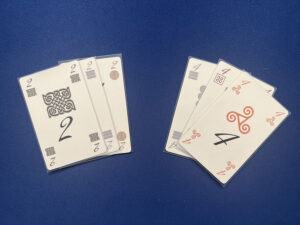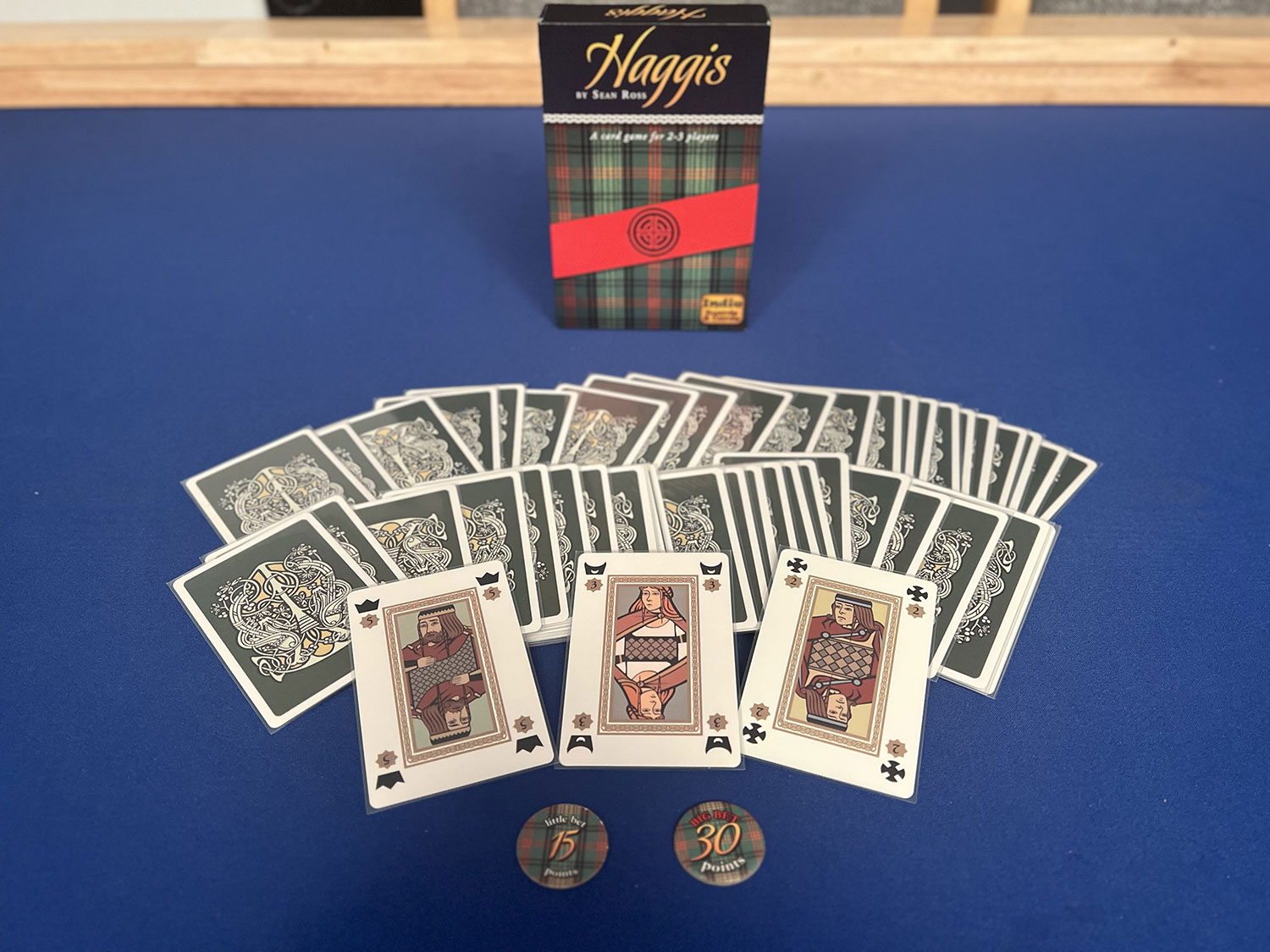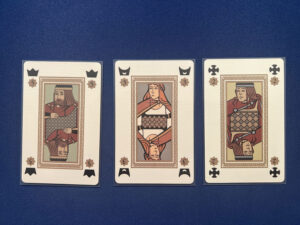 Describing the coalescence of features that come together to create a board game is often a futile affair: the secret ingredient, the “Wow Factor”, the “Chemical X” of it all just seems to get lost. Sometimes a game’s pure existence feels like magic, or, and I say this with full respect to the designers out there, an accident. Sometimes what comes out of a family of mechanisms is an indescribable symphony, where all its individual pieces are meaningless separately, but awe-inspiring when combined.
Describing the coalescence of features that come together to create a board game is often a futile affair: the secret ingredient, the “Wow Factor”, the “Chemical X” of it all just seems to get lost. Sometimes a game’s pure existence feels like magic, or, and I say this with full respect to the designers out there, an accident. Sometimes what comes out of a family of mechanisms is an indescribable symphony, where all its individual pieces are meaningless separately, but awe-inspiring when combined.
This is where Haggis comes in. And Sean Ross is here to conduct us through his magnum opus.
Gameplay Overview:
In the card game of Haggis, 2-3 players will be competing against one another in what is referred to as a “climbing game”. Climbing games are a variant of trick-taking games, and trick-taking games are those games you watched your grandmother play: games like Bridge, Spades, and Euchre.

A climbing game takes the traditional rules of the trick-taking formula and adds to them: instead of being able to play just one card at a time, players can play sets (multiples of the same number) or sequences (runs of the same suit, with ascending, sequential numbers) from their hand as their “lead card”. To beat what I led, players would simply have to have higher values of the same quantity of cards, meaning three 2’s are beat by three 4’s.
Haggis also adds bombs. Bombing a trick changes the rules of what’s happening on the table: they act as a climbing game’s version of a trump. Even if I led five 10s, if someone were to bomb that trick, then they are now leading that trick, and all players can do in this instance is to play a better bomb, if one is possible.
The objective of each round is to be the first player to empty their hand of all cards. If you do, you win the round and score for the cards your opponents didn’t play. In addition, to make it extra spicy, before a single card is even played each hand, players have the option to bet on the fact they will do this first. Guess right and you get those points, guess wrong and the person that went out instead of you gets those points. Bet carefully, play tactically, and maybe you will be the first to score 350 points.

Game Experience:
As I mentioned at the top, playing Haggis is an experience that gets better when the whole picture is finally unlocked. The first layer for many players is to learn to read their hands better. Sure, a four-of-a-kind is hard to beat on its own unassisted, you get to keep the lead, you get rid of four cards… that’s great. However, what if two of those cards can be sent with some sequences? Is it better to have two mid-tier sequences to lead with, or one strong set?
The second layer is understanding that there is no true answer to that question, as it all comes down to timing. Every combination is perfect in some scenario, so what’s best for your current one? Those around the table have a lot of cards left and have only played small pairs, so should I be worried about my runs being superseded? Or will I be able to take their lead from them with my cards?

This all sounds dry and heady, but Haggis is one of the most uproarious games I’ve ever played. Even fourteen hours into a convention, this game brings it out of people! There’s nothing like having “the best hand ever”, betting as much as you can on the hand, only to be the person with the most cards left in your hand at the end. It feels like such a social game, and I think part of that is because everyone will experience that agony and that ecstasy. Haggis grasps people of all ages and experience levels. I got my Canasta-loving grandparents to play this, and they enjoyed it just as much as my younger sibling who had never played a card game in their life.
I only have two gripes with the game. First, it’s a card game. Sometimes players will simply not be dealt the cards they need to form a decent hand. Sure, this doesn’t happen often, but it can dampen the mood if a bad hand comes out. Usually, in partnership games, this is mitigated by having that partner, but in Haggis, these hands can just be rough.
The second is its complicated rules journey. Sean Ross, the designer of the game, has spent years researching plays, analyzing data, etc… and has released several iterations of the rules over the years. While this may not affect everyone, I have run into issues in the past where we have to have a conversation before playing the game about what version of the rules we will be playing, instead of just playing what’s printed. The new Kickstarter version from the Portland Game Collective fixes this somewhat, but also has quite a few variants in there, so maybe not all that much.
Final Thoughts:
I truly think that Haggis is the best climbing and trick-taking game ever designed. It is simple to learn, quick to play, and always leads to a lively atmosphere full of explosive interactions (bombs or otherwise). This is a game everyone should try, and it is a game that will live in my game bag forever.
Final Score: 4 Stars – The quintessential hobbyist card game.
 Hits:
Hits:
• Easy to learn
• Social and engaging
• Deep but not overwhelming
Misses:
• Rules differences can cause confusion
• Bad hands can ruin pacing
• Bombs are confusing to new players
Source: Board Game Quest




